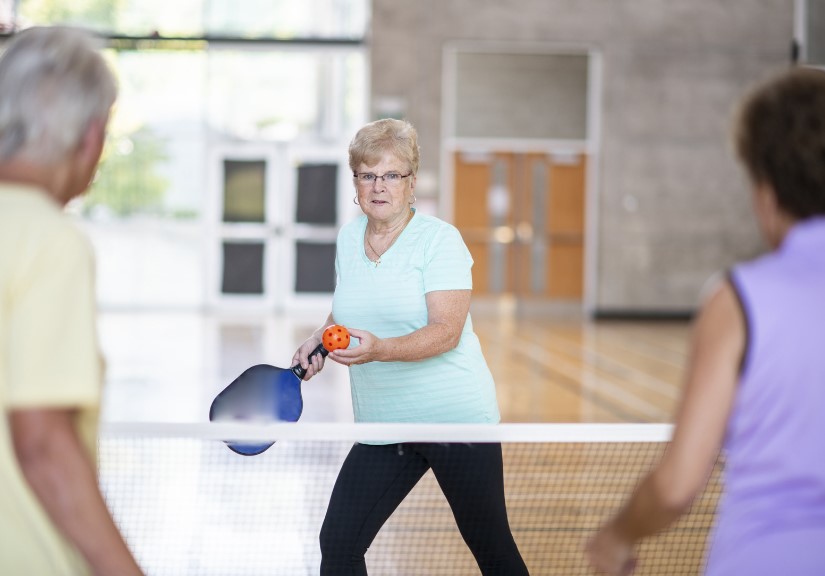Physical activity is essential for people of all ages but becomes increasingly crucial for older adults. Unfortunately, many seniors choose to lead sedentary lifestyles, refusing to engage in regular exercise.
This reluctance to exercise significantly affects their health, mobility, and financial well-being. In this article, we will explore the detrimental effects of refusing to exercise among older adults, shed light on the importance of staying active, and provide ideas for incorporating exercise into your daily routine regardless of your current fitness level.
- Declining Health: One of the most significant negative impacts of refusing to exercise is the decline in overall health. Physical inactivity increases the risk of chronic diseases such as cardiovascular disease, obesity, diabetes, and certain types of cancer. Moreover, seniors who lead sedentary lives are more likely to experience muscle loss, reduced bone density, and decreased flexibility, making them more vulnerable to falls and injuries.
- Impaired Mobility: Regular exercise is vital in maintaining mobility and functional independence in older adults. By avoiding physical activity, seniors may experience a decline in muscle strength, joint flexibility, and balance, leading to difficulties in performing daily activities. This loss of mobility can negatively impact their quality of life, limit their social interactions, and increase their dependence on others for basic tasks.
- Increased Healthcare Costs: Refusing to exercise can have a significant financial impact on older adults. Sedentary lifestyles often lead to the development of chronic conditions, necessitating frequent medical interventions, hospitalizations, and medications. The cost of managing these health conditions can quickly add up, placing a financial burden on seniors and potentially depleting their savings or retirement funds.
- Long-term Care Expenses: The consequences of inactivity can extend beyond medical expenses to long-term care needs. Seniors who lack physical fitness and mobility are at a higher risk of requiring assistance with daily activities or moving to assisted living facilities or nursing homes. The costs associated with long-term care can be excessive, and by neglecting exercise, older adults increase their likelihood of needing such care and incur substantial financial implications.
- Reduced Cognitive Function: Regular physical activity has been linked to improved cognitive function and a reduced risk of cognitive decline in older adults. By neglecting exercise, seniors may experience cognitive impairments and an increased vulnerability to conditions such as dementia and Alzheimer’s disease. The decline in cognitive abilities can lead to the need for specialized care and further financial strain.
There are numerous options for incorporating sustainable exercise into your lifestyle. Most programs designed for seniors are scalable and can be tailored to your fitness level and needs.
Below are a few ideas to get you started:
- Personal Training: Working with a certified personal trainer specializing in training older adults can provide personalized guidance and support. They can develop an exercise program tailored to specific goals, abilities, and any existing health conditions.
- Group Fitness Classes: Joining group fitness classes specifically designed for older adults can offer a supportive and social exercise environment. Classes such as low-impact aerobics, water aerobics, yoga, Tai Chi, or Pilates can provide various options to improve strength, flexibility, and balance.
- Silver Sneakers®: Silver Sneakers is a fitness program for older adults, often available through Medicare Advantage plans or insurance coverage. It offers access to various fitness facilities, exercise classes, and personalized workout plans.
- Physical Therapy: If dealing with specific injuries, mobility limitations, or chronic conditions, consulting with a physical therapist is beneficial. They can design an exercise program to address specific needs and guide individuals through safe and effective exercises. Once discharged from care, ask for referrals to continue into a guided fitness program.
- Balance and Fall Prevention Programs: Many community centers, hospitals, and senior organizations offer specialized programs focusing on balance and fall prevention. These programs typically include exercises to improve balance, coordination, and strength, helping reduce the risk of falls.
- Chair-based Exercises: For individuals with limited mobility or those who have difficulty standing for prolonged periods, chair-based exercises can be highly beneficial. These exercises can include seated strength training, stretching, and range of motion exercises. (You should seek to graduate from seated exercises to those which also improve balance and mobility).
- Walking Programs: Walking is a low-impact exercise that can be easily incorporated into daily routines. Many communities have walking groups or walking programs specifically designed for older adults. It’s important to start with an appropriate distance and gradually increase intensity.
- Adaptive Sports: Adaptive sports, such as wheelchair basketball, seated volleyball, or swimming, provide opportunities for individuals with disabilities to engage in physical activity in a supportive and inclusive environment.
- Virtual Exercise Programs: With advancements in technology, virtual exercise programs are available that provide professionally guided workouts specifically designed for older adults. These programs offer convenience and flexibility, allowing individuals to exercise at home while receiving expert guidance.
Refusing exercise among older adults comes at a high cost, impacting their health, mobility, and financial well-being. Regular physical activity and structured exercise are essential for maintaining good health, preserving mobility, and reducing the risk of chronic conditions.
By staying active, older adults can enhance their quality of life, maintain independence, and potentially reduce healthcare costs.
Remember, before starting any exercise program, you should always consult with your healthcare provider, then with a qualified fitness professional. They can assess individual needs, provide recommendations, and ensure that exercise routines are safe and appropriate.
Joe Carson B.S. NASM-CPT/FAS/CN
Master Trainer/Functional Aging Specialist/Certified Nutritionist
Twenty-First Century Aging





